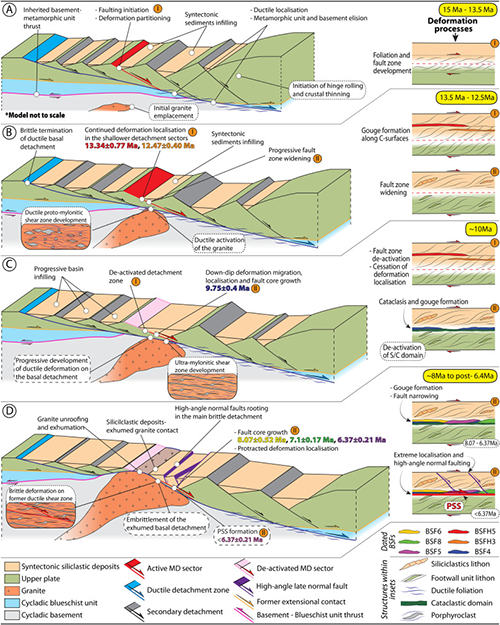How brittle detachments form and evolve through space and time

Zuccari C., F. Mazzarini, E. Tavarnelli, G. Viola, L. Aldega, V. Moretto, R. Xie, G. Musumeci, (2024). Earth and Planetary Science Letters, 648. https://doi.org/10.1016/j.epsl.2024.119108
Abstract
We report the first absolute deformation ages for the Mykonos Detachment that juxtaposes, in the context of the current Aegean rifting, Miocene siliciclastic deposits in the hanging wall against metabasites and synkinematic granites in the footwall. We identified and characterised 16 brittle structural facies (BSFs) within the detachment fault architecture through fieldwork, optical microscopy, and X-ray diffraction. BSFs dating by K-Ar of synkinematic mixed layer illite-smectite shows that the preserved BSFs formed during repeated slip events, thus constraining protracted faulting between 13.5 and 6.5 Ma. Dating, structural and mineralogical characterisation allowed for the time-constrained evaluation of the activation/de-activation of the involved deformation mechanisms and of the processes, including (i) fault zone nucleation, (ii) deformation partitioning, (iii) cataclasis, gouge formation and (iv) the final deformation localisation, that govern the evolution of brittle detachments, shaping the local current upper crustal structure. Our results provide new insights into the understanding of wide active and fossil rift systems.



Devi effettuare l'accesso per postare un commento.